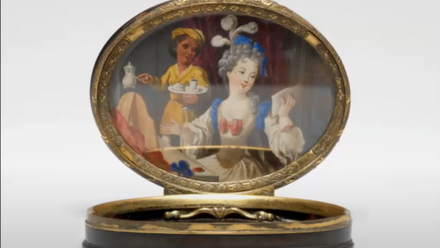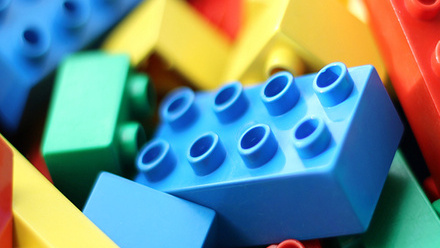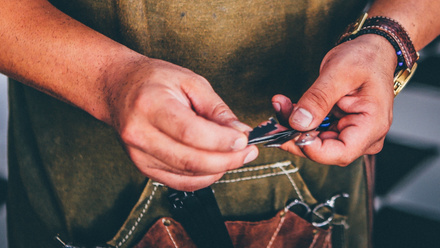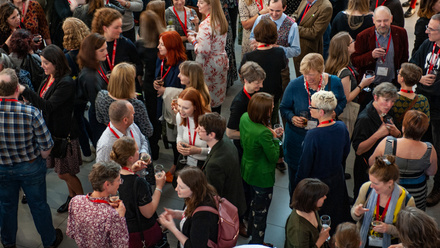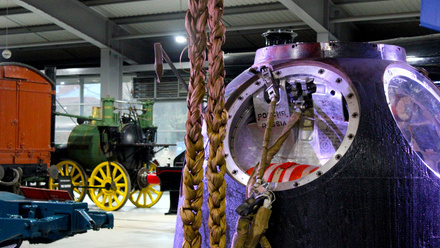I have watched the global reaction to the killing of George Floyd building momentum since 25 May and I have reflected deeply. It is incredibly sad that it takes the tragedy of the loss of yet another valued and valuable human life to force our society to examine its faults.
Regrettably, the conservation profession and the cultural heritage sector has not done enough to combat racism. So, what do we do now? The Museum Detox network, which represents people in the museum and gallery sectors who identify as of colour, tweeted: “Silence is an act of violence. If organisations cannot publicly declare that #BlackLivesMatter, they are complicit.”
Icon does not want to be complicit. I personally believe that Icon should speak out against racisim, discrimination and intolerance, and should seek to foster justice, reconciliation and healing. But, at the same time, I don’t want to offer soundbites or hollow promises. I commit Icon to taking action, but that action needs to be shaped by a full understanding of the issues and the most effective means of achieving lasting change. I intend to work with staff, trustees, members, friends and colleagues to define tangible activities where Icon can make a difference.
Black Lives Matter
As a first step we shared some useful and informative resources with our members. By being better informed we hope that our members will be able to raise concerns and challenge negative behaviours in their workplaces and institutions with greater confidence.
- Anti-racism for beginners
- Seven meaningful ways you can support Black people today
- Charity So White
- Stephen Lawrence Charitable Trust
- The C-Word Podcast S06E04: Diversity (with lots of useful links)
We also commissioned paper conservator Ashleigh Brown to write a blog about her experiences. We already know that this moving and eloquent story has encouraged others to take action and to share their experiences too. We would now like to extend the offer to use the Icon website as a place for people to share their stories and to showcase good practice - please get in touch with me if you have an idea.
And in the coming weeks we know that conservators will have an important role to play in implementing the decisions that arise from the high profile debates about what should happen to statues of proponents of the slave trade. We recognise that some of these objects and places have difficult, challenging and even painful histories. However, conservation seeks to preserve the whole of an object's story, encompassing the intangible aspects as well as the physical elements. This includes an object's recent history, such as the moment when the statue of Edward Colston was toppled into the harbour in Bristol as part of the campaign to challenge systemic racism in the UK. By carefully preserving the traces of protest graffiti, along with the rope, banners and placards, present and future generations will be able to study, and learn from, the evolving story of this particular artefact. They will also be able to judge whether we, as a society, took the messages of the protests to heart and took action to end racism.
(You can read about the ongoing conservation of the Edward Colston statue on the M-Shed twitter feed and this BBC news story.)
In the coming weeks and months there will be many more debates about how we collectively choose to care for and present what is often described as contested heritage. Objects such as statues, memorials and murals are both cultural artefacts and historic monuments; some are protected by heritage legislation. Decisions about how and where they are displayed and interpreted should therefore be reached through genuinely democratic processes where the voices of the full spectrum of stakeholders are actively welcomed and listened to. The act of erecting, moving, re-presenting or indeed removing an object becomes part of history and each chapter in the story should be documented to enable future understanding and interpretation.
Where decisions are made to withdraw cultural objects from public display (for whatever reason) this should be carried out with care and using specialist expertise to ensure that no damage occurs. While we wholeheartedly support the Black Lives Matter campaign and we sincerely recognise the hurt caused by the ongoing presence of monuments to slave trade in our townscapes, as the professional body for conservators we cannot condone the deliberate damage or destruction of cultural objects. Our role as conservation professionals is to preserve objects and collections, and their sometimes difficult histories, on behalf of future generations.
Commenting after his recent talk entitled "Conservation is not neutral (and neither are we)" conservator Fletcher Durant said: "Part of our job is considering the whole cultural network of an object and its stakeholders, not just the parts that are close to us and privileged parts of society." These words offer a timely reminder of the responsibilty that lies in our hands, and the role that we, as conservators, can play in challenging racism and discrimination.
Photo credit: Palm nuts. Yoruba people, Nigeria, 1880-1920. Detail view. White background. Credit: Science Museum, London. Attribution 4.0 International (CC BY 4.0)
Updated: 18 June 2020

